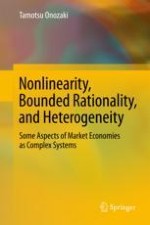2018 | OriginalPaper | Buchkapitel
5. High-Dimensional Nonlinear Cobweb Model
verfasst von : Tamotsu Onozaki
Erschienen in: Nonlinearity, Bounded Rationality, and Heterogeneity
Verlag: Springer Japan
Aktivieren Sie unsere intelligente Suche, um passende Fachinhalte oder Patente zu finden.
Wählen Sie Textabschnitte aus um mit Künstlicher Intelligenz passenden Patente zu finden. powered by
Markieren Sie Textabschnitte, um KI-gestützt weitere passende Inhalte zu finden. powered by
